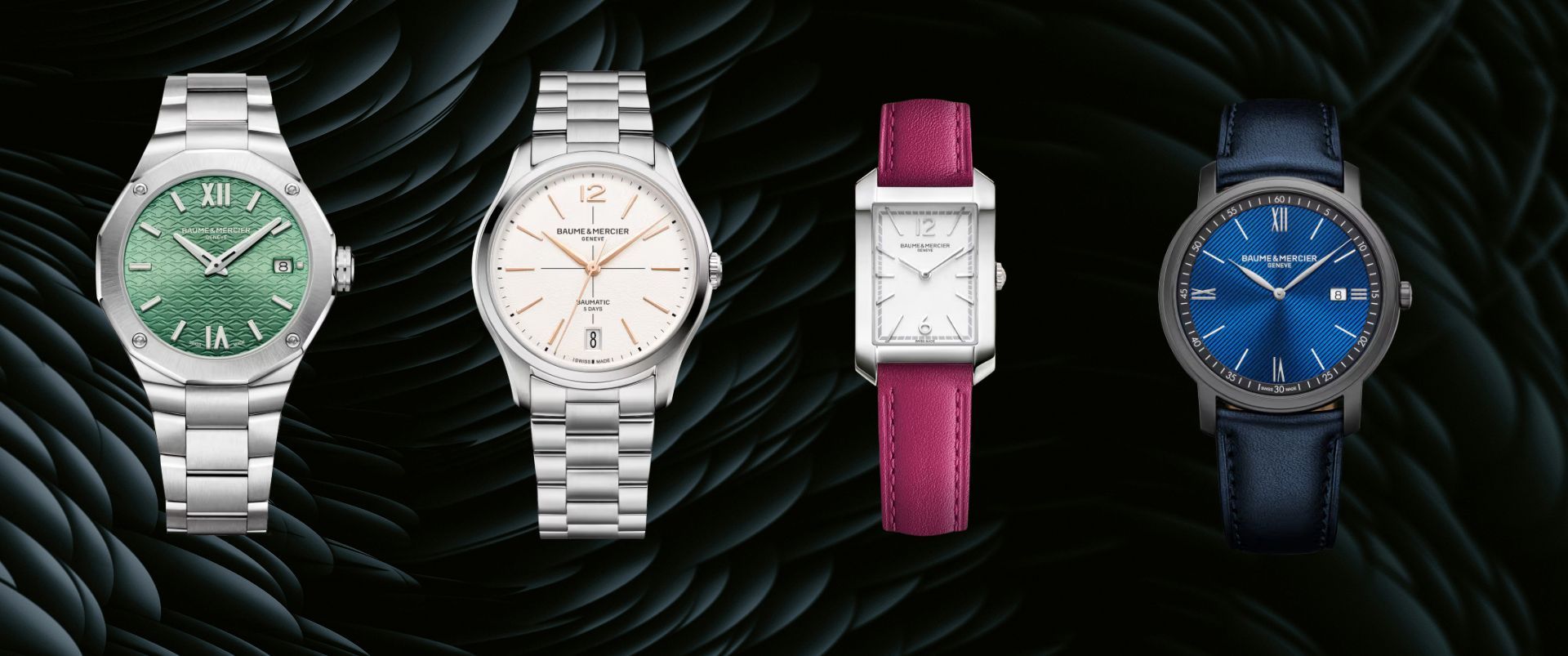History has it: Horology of the Red Star - Soviet Watches History
by Ronie A. Ghosh (Instagram : @horonation)
When we come across the term Russian Engineering and Manufacturing, out thoughts immediately switch to best built fighter jets, tanks, armaments and then the architecture of their churches, cathedrals, the Kremlin and so on. Thanks to all those fiction movies and novels the Soviet era is often coupled with thoughts of the cold war era spy gadgets, weapons, secret technologies, space and rocket technology . But there is surely more to it! Well, were obviously talking in terms of the watches. Infact through the Czarist era various clocktowers, cathedral clocks and many styled ornamental clocks were designed in Russia.
Let's did a little deeper. The Imperial era in Russia saw several small watch workshops and enterprises, usually assembling watches using parts made abroad. Due to a lack of technology and equipment, it was more affordable and even rather efficient to import unfinished Swiss and German components, than assembling them in local Russian workshops. This assembly however, was undertaken by specialized independent watchmakers such as Heinrich Moser, George Favre-Jacot, and Pavel Buhre (Paul Buhré) who appointed by the Imperial Court. In 1899, Buhre was awarded the title of the Official Supplier of the Imperial Court and was granted the right to use the Russian Coat of Arms as part of its logo. A lesser know fact is that H. Moser & Cie, founded in Le Locle, Switzerland, opened their workshop in St. Petersburg in 1826. Moser was one of the most prolific independent watchmakers in the Imperial-era Russia, manufacturing a wide variety of pocket and wristwatches for men and women. In 1918, a year after the Bolshevik Revolution, the entire Soviet industrial infrastructure was nationalized. All independent watchmaking workshops were confiscated by the State, and the original owners were eventually forced to withdraw from the market. By 1922, the entire watchmaking industry had become part of the State Trust of Precision Mechanics, also known as Gostrest Tochmeh.

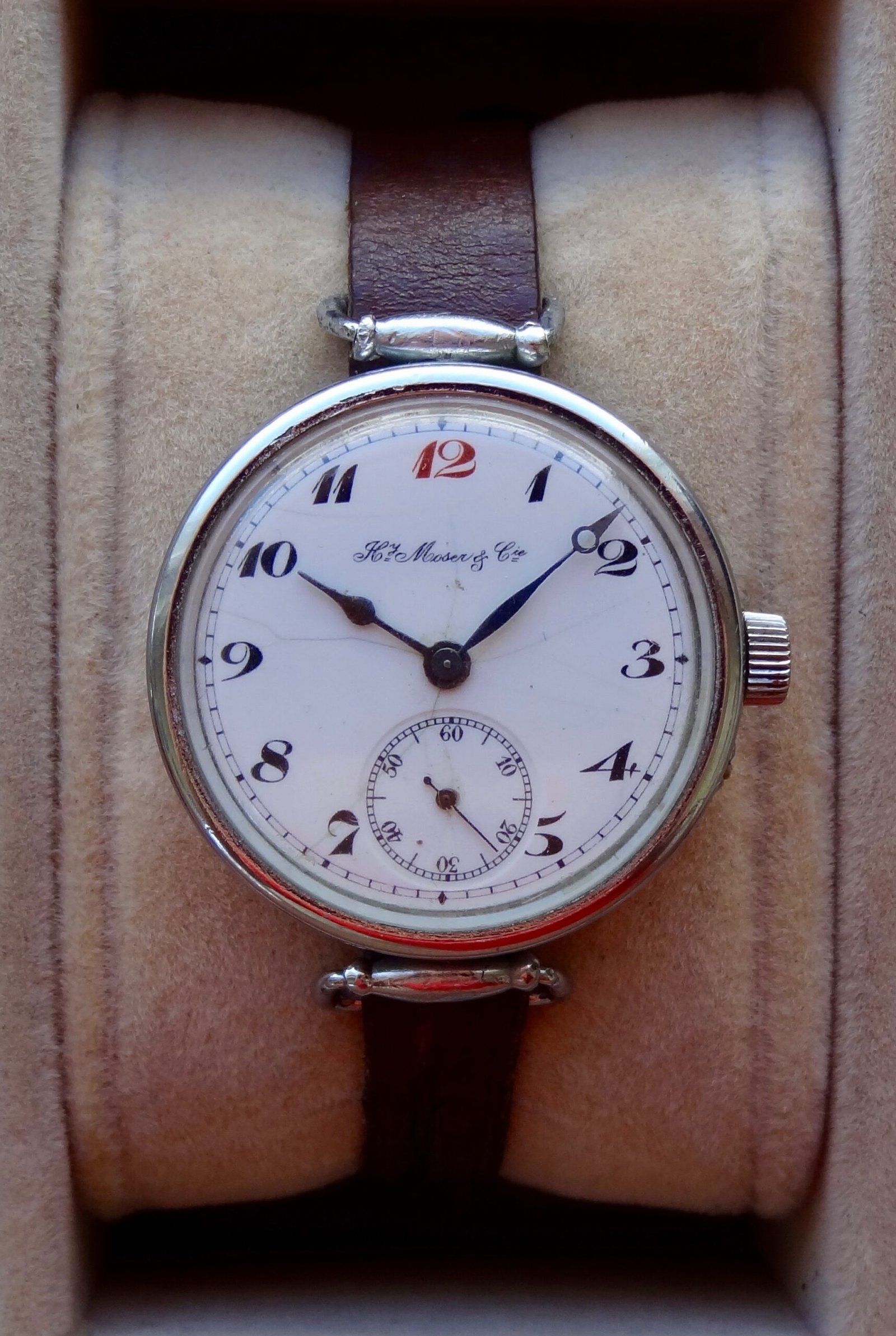
However, the real revolution in horology began in the Soviet Union after the Bolshevik Revolution and around WW2. Untill then none of the watches that were made with salvaged Swiss parts or any imported ones were capable of being called a proper people’s watch.
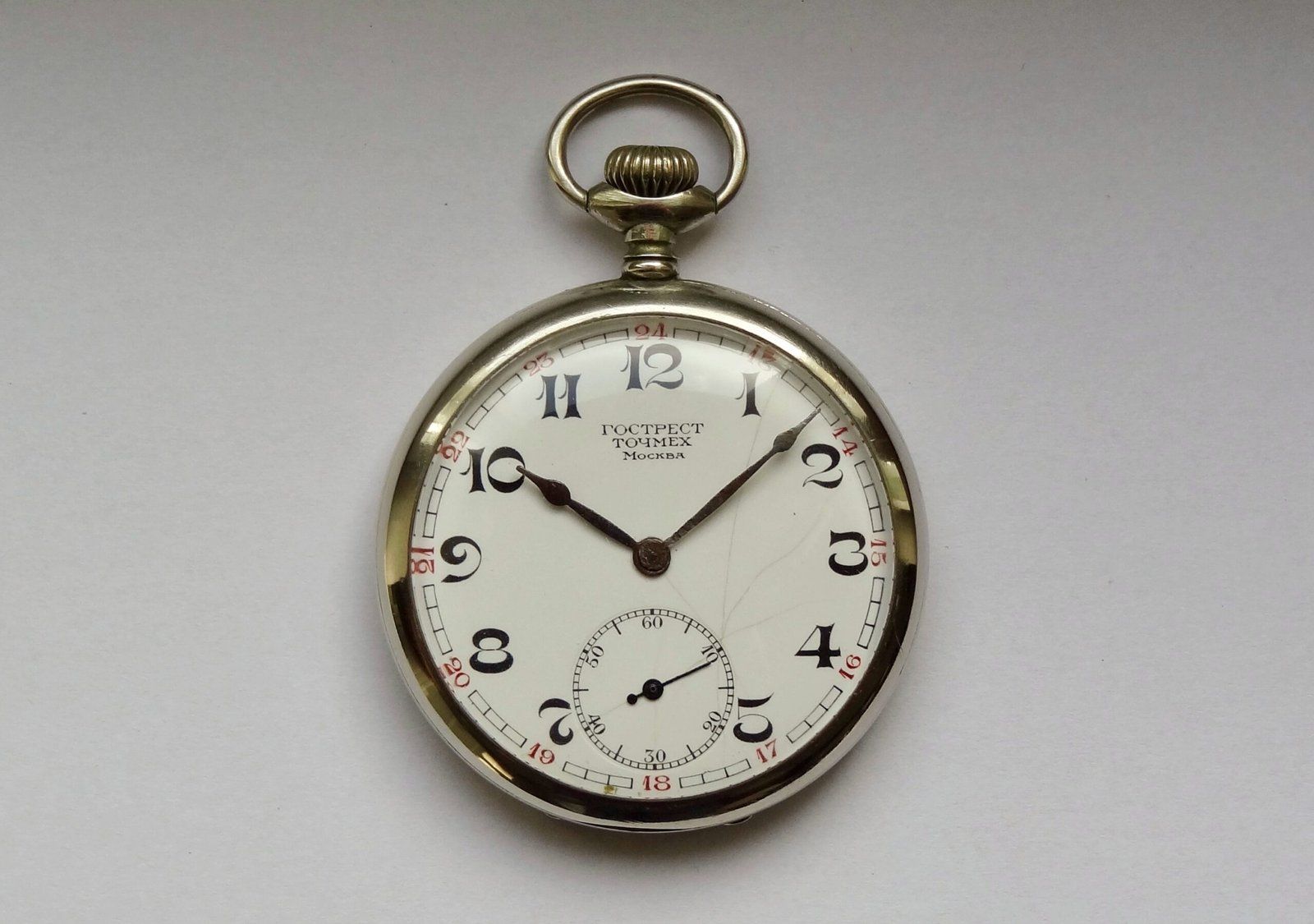
Russia came very late to the watchmaking party. While the American and European watch industries were producing watches on an industrial scale since the 1800’s, the first indigenous Russian watchmaker wasn’t founded until 1927. The Amtorg Trading Corporation representing the Soviet Union in the United States acquired the assets of the bankrupt Dueber-Hampden Watch Company and the First Moscow Watch Factory was launched. The Size 16 movement was infact the base for Kirova K-43 trench watch from 1st State Watch Factory.
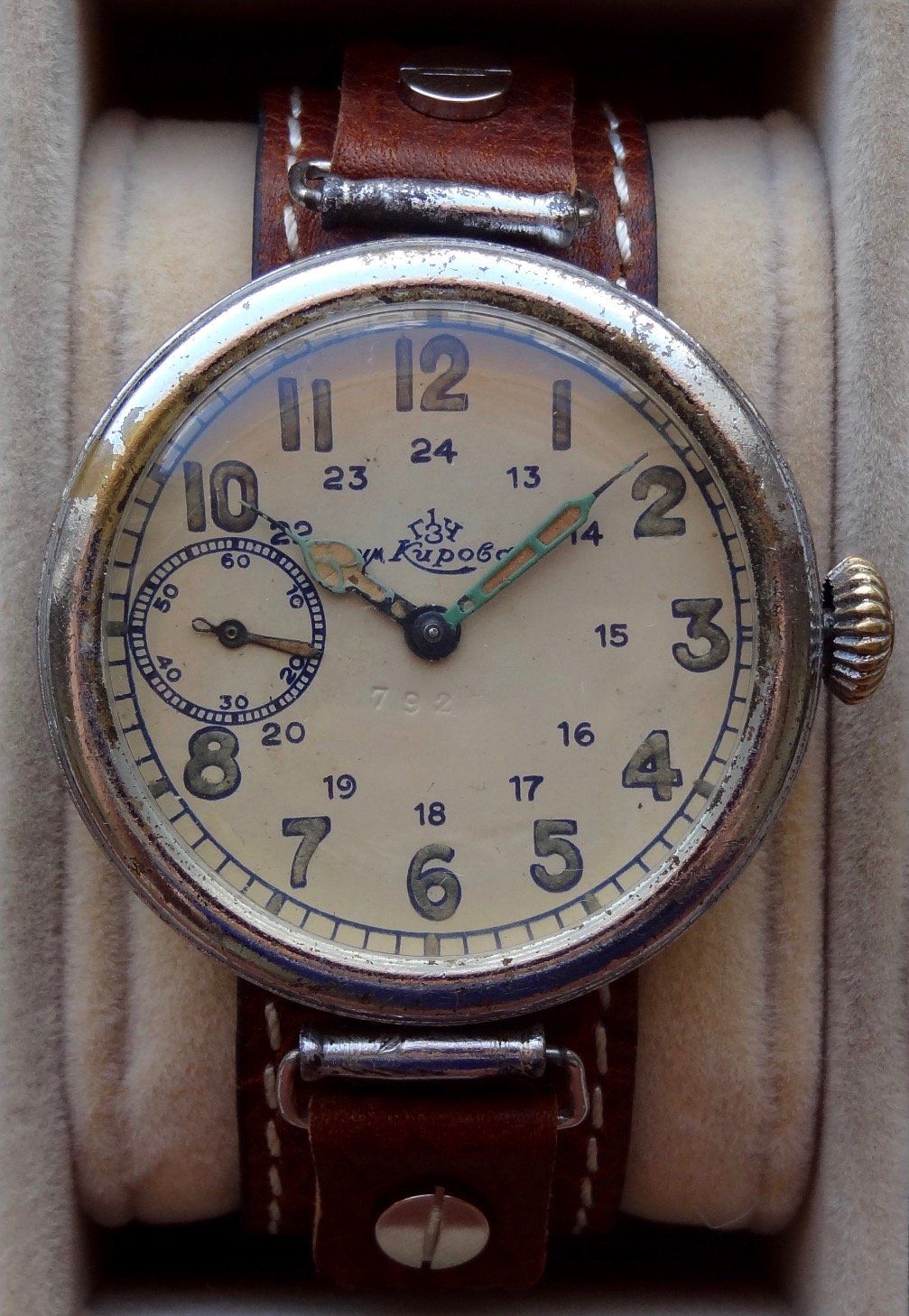
The first 50 watches produced by the Moscow Watch Factory using materials and machinery from the United States were presented at the Revolution Theatre back in 1930. A watch that often comes to mind from this era is the “Commander” which was commonly used by the officers of the Red Army.
By 1940 the Moscow Watch Factory had already produced 2.7 million pocket and wrist watches. However after being evacuated and relocated to the city of Zlatoust in Chelyabinsk Oblast, the first Moscow Watch Factory shifted the focus towards aviation chronometers and aircraft watches. Soon after, the Chistopol Watch Factory popularly know as the brand Vostok today was launched and the first few batches of the K-43 were manufactured. In 1946 the Pobeda (Victory) watches were produced by the Moscow Watch Factory. These name and specifications of these watches were approved by the leaders of the Soviet Union. Most of the Russian watches at this time, such as Shturmanskie watches, were not produced for the general public, but mainly for use by the Army/Air Force. This did begin to change with certain watches being developed for general sale, which helped to develop some of the brands which still exist today. The Molnija Watch Factory is established in the city of Chelyabinsk and used Cortebert swiss movement variants as base movements. They began manufacturing with the production output of its first aviation cockpit watch, the AVR-M. Molnija’s Chelyabinsk Watch Factory annually produced about 30 thousand specialized watches and more than 1 million pocket watches that time. Many of those vintages are still available today. Modern version of cockpit clocks are still used in Mil Mi series helicopters, MiGs and Sukhoi aircrafts.
If you are wondering that first watch in Space was an Omega Speedmaster then that was not the case, Yuri Gagarin, the first astronaut in space wore a Sturmanskie wristwatch while he was on the mission. These watches however was not available to general public then. However for general trivia it should be known that even before this a standard Pobeda watch can be said to be first watch in space as Dr. Abraham Genin( A Soviet Medical Research Scientist) tied his Pobeda watch to the arm of a test space dog named Chernushka (Blackie) who went on a test aboard on Korabl-Sputnik 4 on March 1961, a Month before Gagarin’s flight.


However the 1SWF(State Watch Factory) Type-17 can be said to be first custom Soviet Caliber developed in year 1941 from a modified K-43 caliber.

Coming to chronographs there is much history regarding those as well. A modified Kirova Type 1 Pocket watch movement was added with Chronograph parts to produce monopusher chronograph. Later chronograph movement were heavily inspired from Valjoux 61 movement and lead to production of Generalskie Monopusher chronograph.
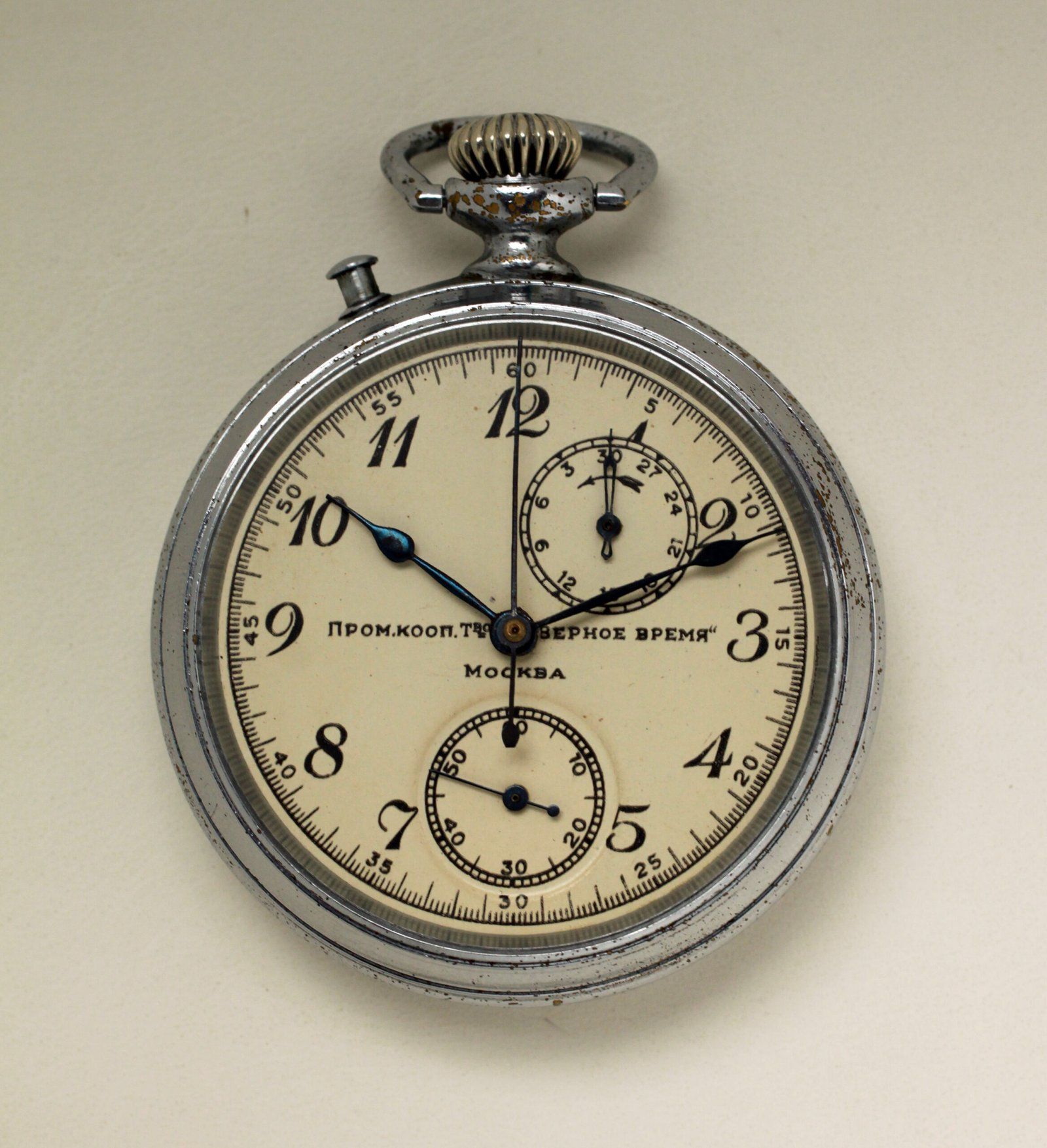
And one more type of UROFA type 59 chronograph made in captured Glashutte town based Tutima and Hanhart factories during later WW2 in erstwhile GDR were Flieger flyback chronographs but made for Soviet pilots. Until Soviets took all the equipments to 1st Moscow Watch Factory together with all spare parts, made their own changes and produced it by themselves named Kirova chronograph.

Soon type 59 was discontinued and Soviet watch factories led to development of Strela 3017 and Poljot 3133 movements derived from Valjoux chronograph movements. Some were issued to Soviet Air Force flying schools. Those dials bear the Air force insignia.

After war the a brand called Pobeda (“Victory”) was started and the first watch was based on French LIP movement R26 caliber. 1MCHZ factory made more than millions of these based on different dial/case designs.
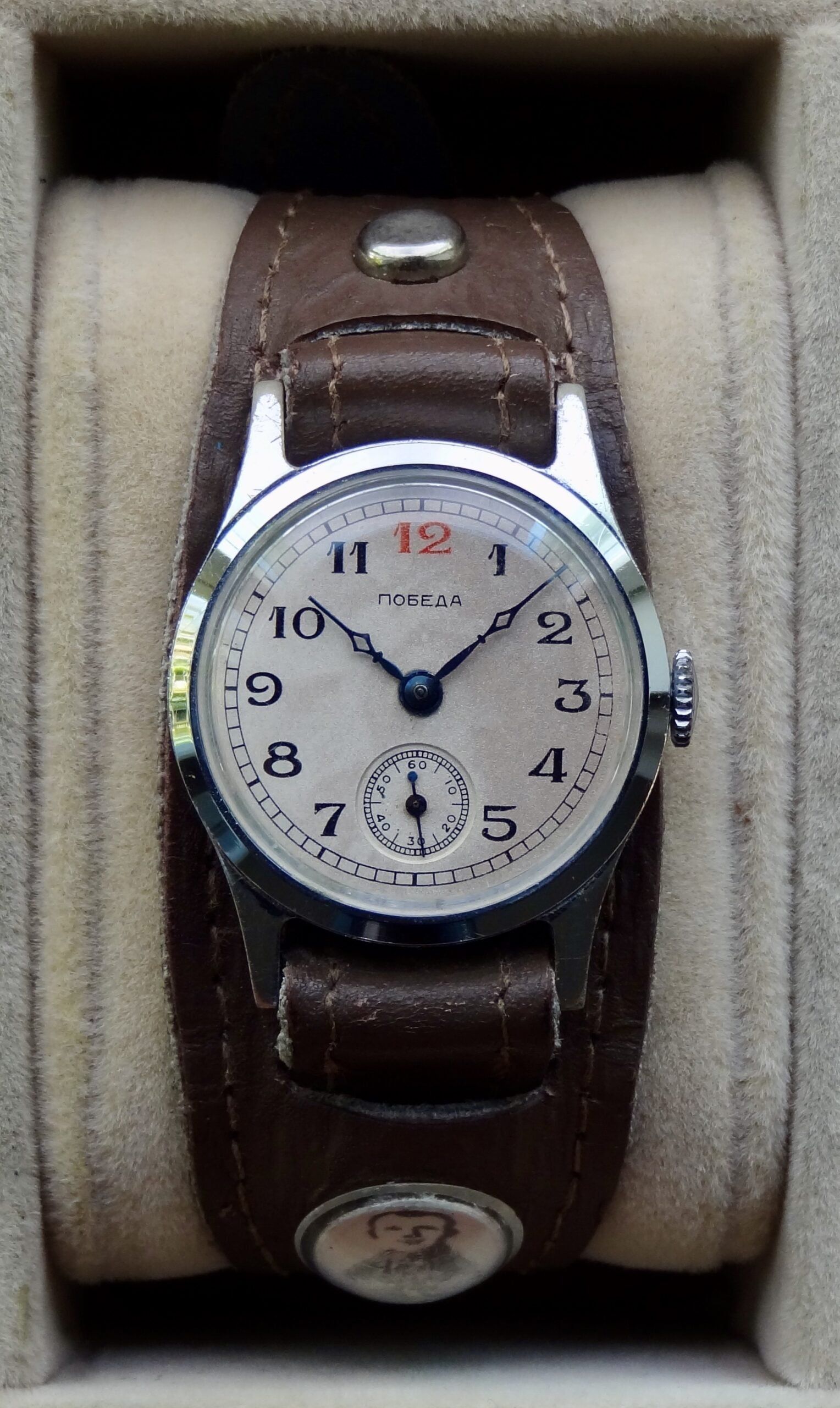
During 50’s and 60’s many sub brands were started in First Moscow watch factory named as Kirovskie, Kosmos, MIR, ZIM, Saturn, Rodina, Signal, Vympel etc. Later the First Moscow Watch Factory was named as Poljot Brand and various watches were produced like alarm watches, divers, automatics and such. The Second Moscow watch factory was shifted to Kazan in 1941 due to German invasion and it was renamed as Vostok (Chistopol) watch factory. It became official supplier to Ministry of Defence, USSR with Komandirskie watches.
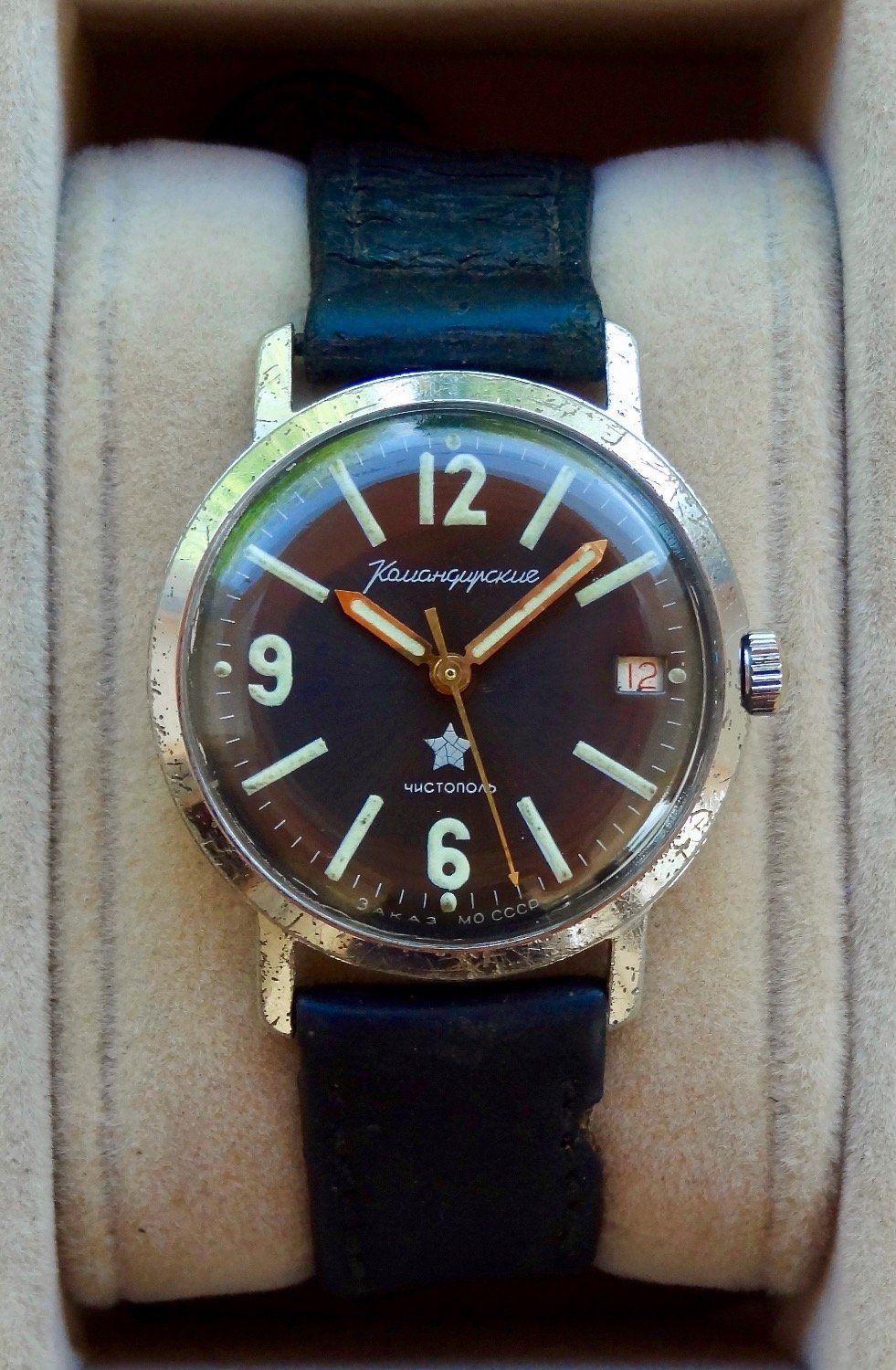
With sufficient experience gained from years of watchmaking they introduced the legendary Amphibian diving watch.

They used a hermetically sealed steel case with O-Ring seal case back for good waterproofing up to 200 meters. Parallely Slava and Raketa also manufacture their own versions of Amphibians. In 1950-60s Zlatoust Factory has produced 191-ЧС (ChS) watches for the divers of the Soviet navy among other things. The biggest wrist watch in the world: about 60 mm (without crown), weight is about 250 grams. Heavy stainless steel case is very complicated in production, but truly tough. At that time it was even produced with radioactive materials like Radium-226. In order to achieve the effect of fluorescence the numbers in dial were covered with Radium-226 salts.
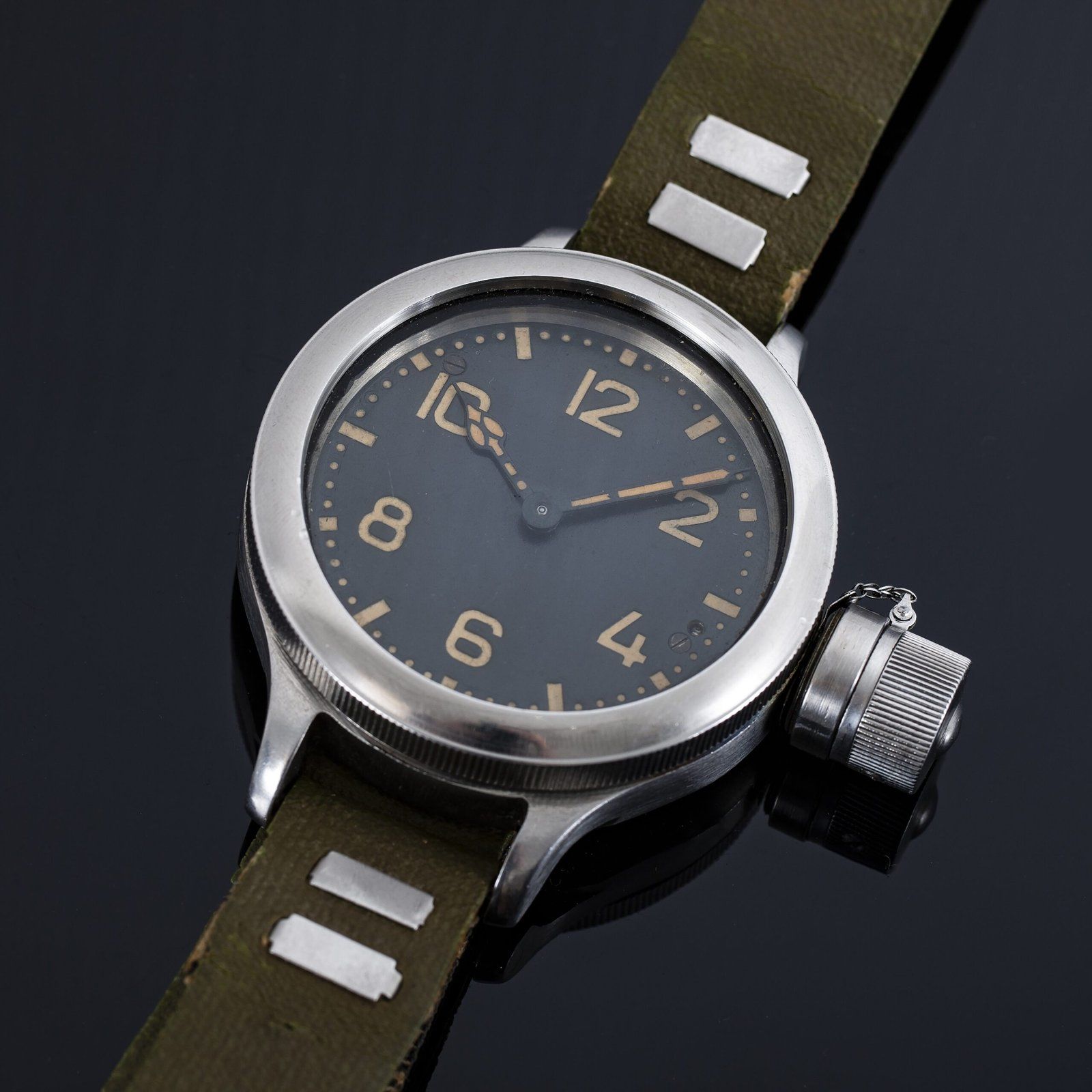
Soviets were not held back in electrically powered watches as well. They went ahead to make Electric/Quartz watches, Digital/LED based watches, Tuning fork based watches as well.


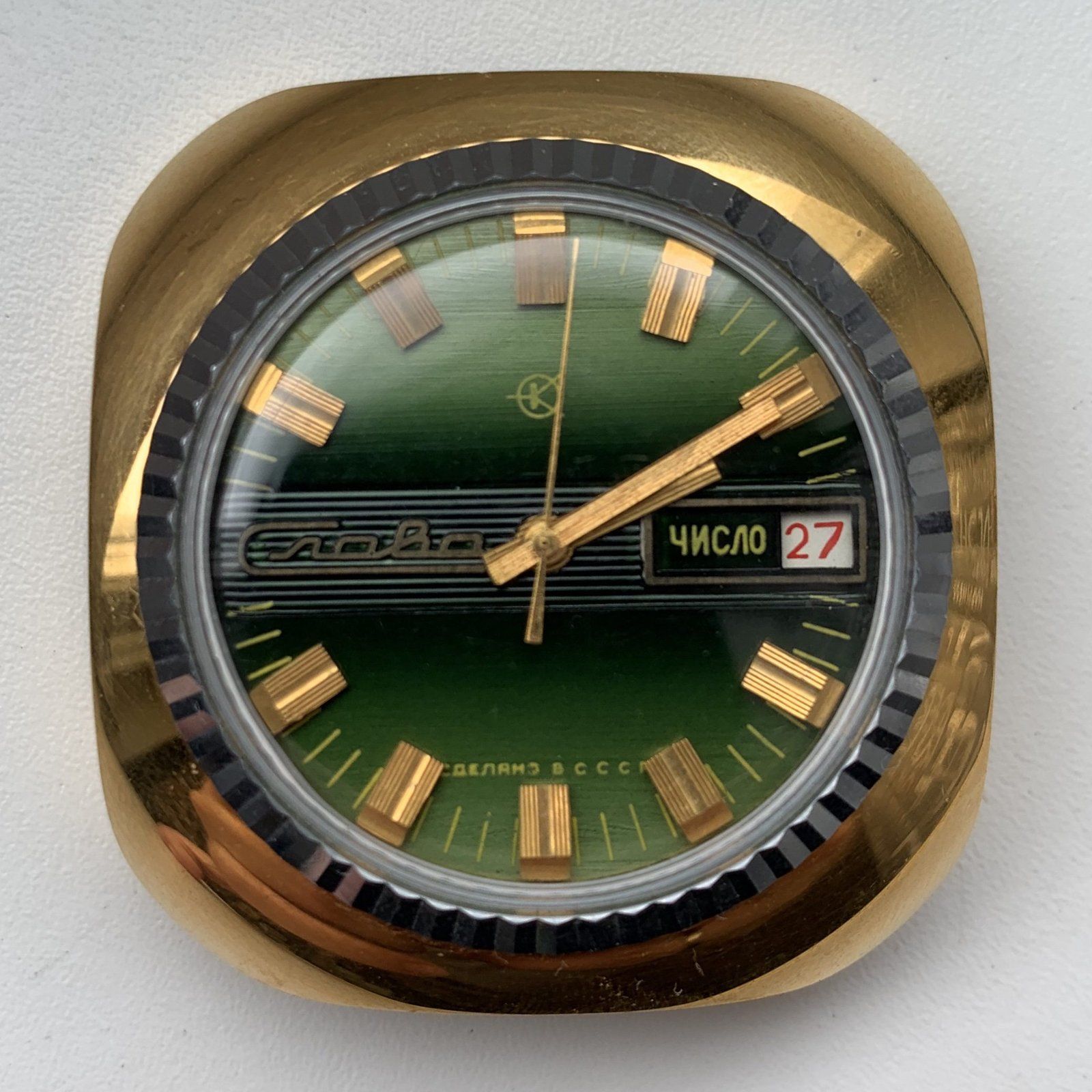
Referring to all watches above one might be wondering what did the Russians do about the precision of their watches. Was there any chronometer grade timepiece in their glorious industrial watchmaking history ? Yes there was a heavily inspired and yet quite a beautiful one.
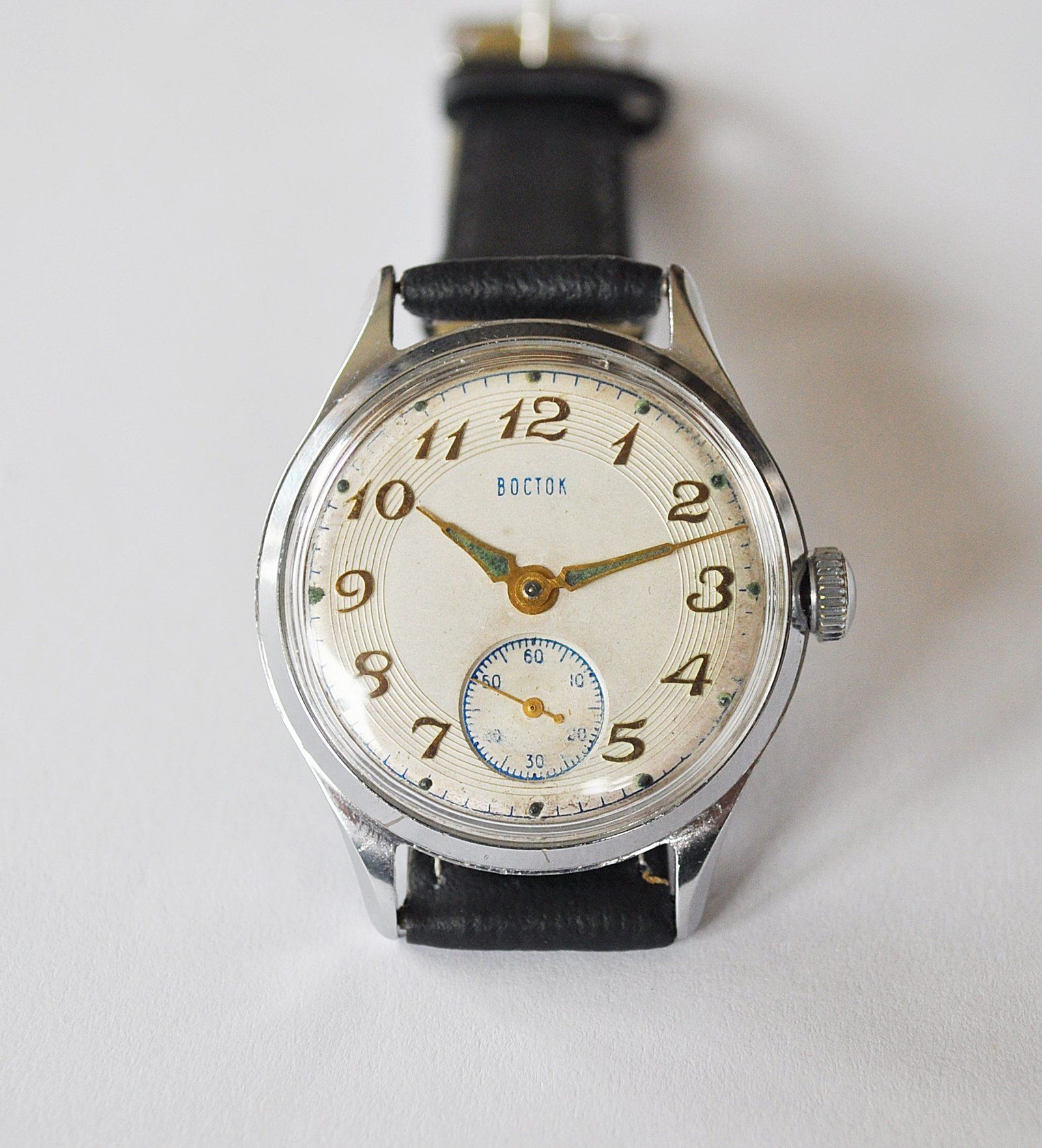
n 1948 Zenith released legendary chronometer Caliber Cal. 135 made by Ephrem Jobin that made Zenith quite famous. In 1957 Vostok made an a heavily inspired movement with some design changes using and came up with Vostok calibre 2802. Later the sub seconds hand was changed to central second hands and that modified movement was Cal. 2809 of Vostok Precisionskie.
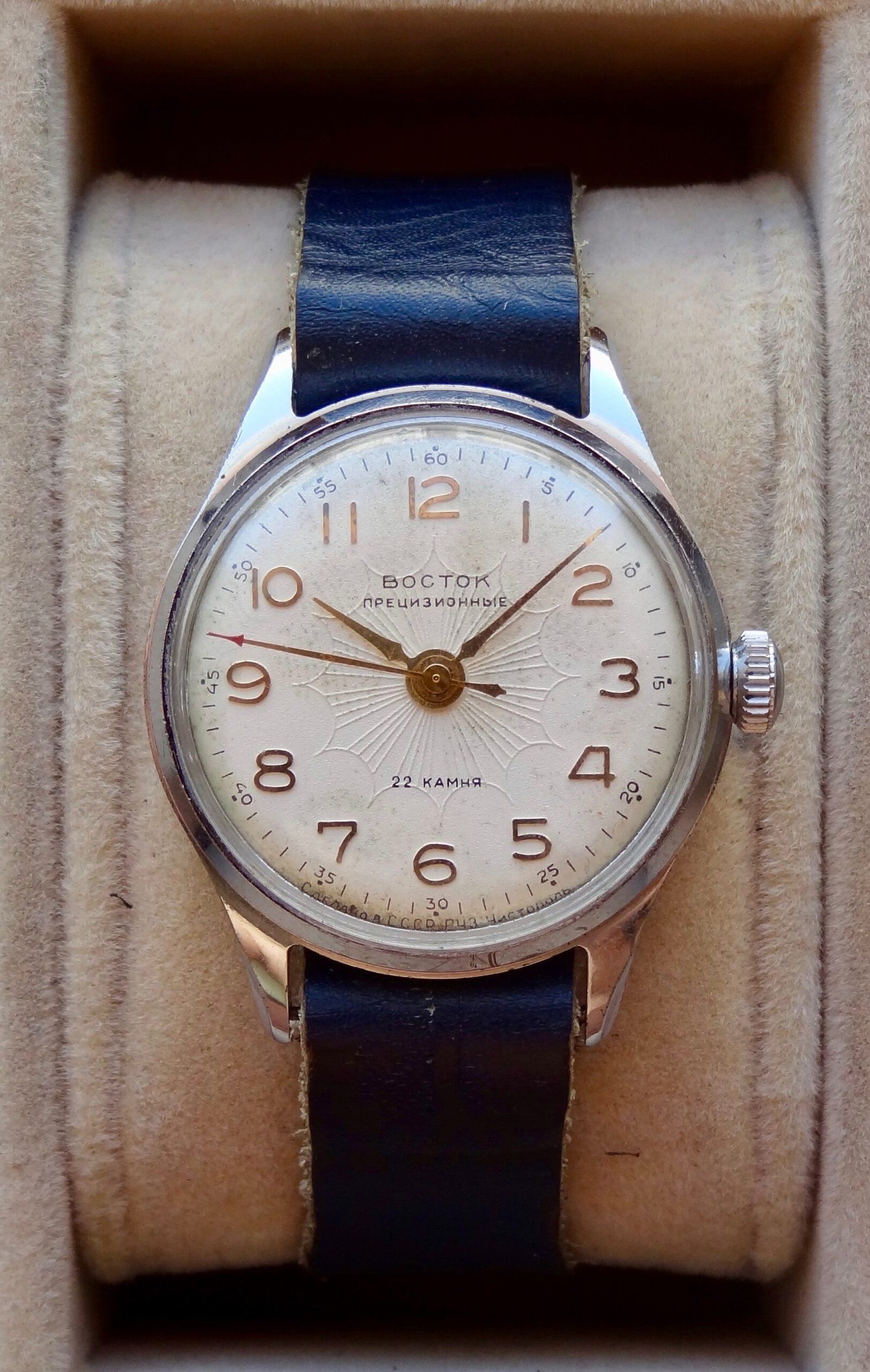
There has been many trivial and historically important watches that are now hot favourite among collectors. One such watch is the Raketa Big Zero was made famous by Russian president Mikhail Gorbachev. Coupled with a 39mm cushion case and another round case, with minimal lugs, the watch has awesome wrist-presence. Under the hood of the originals lies a Raketa calibre 2609, a simple and widely used movement yet with notable refinements such as Incabloc shock protection, Breguet overcoil and screw-adjusted balance.

A Pulsometer watch that were used by the doctors in earlier days to count pulse rate also had a Soviet cousin. The beautiful pieces from Slava (automatic) and Chaika(quartz) sported an off white dial with bright red inked print for the pulsation markings. This too is one of the most sought after watches by collectors.

Other collector's pride are the Raketa Copernicus and Raketa 24 hours watches for their unique wrist presence.
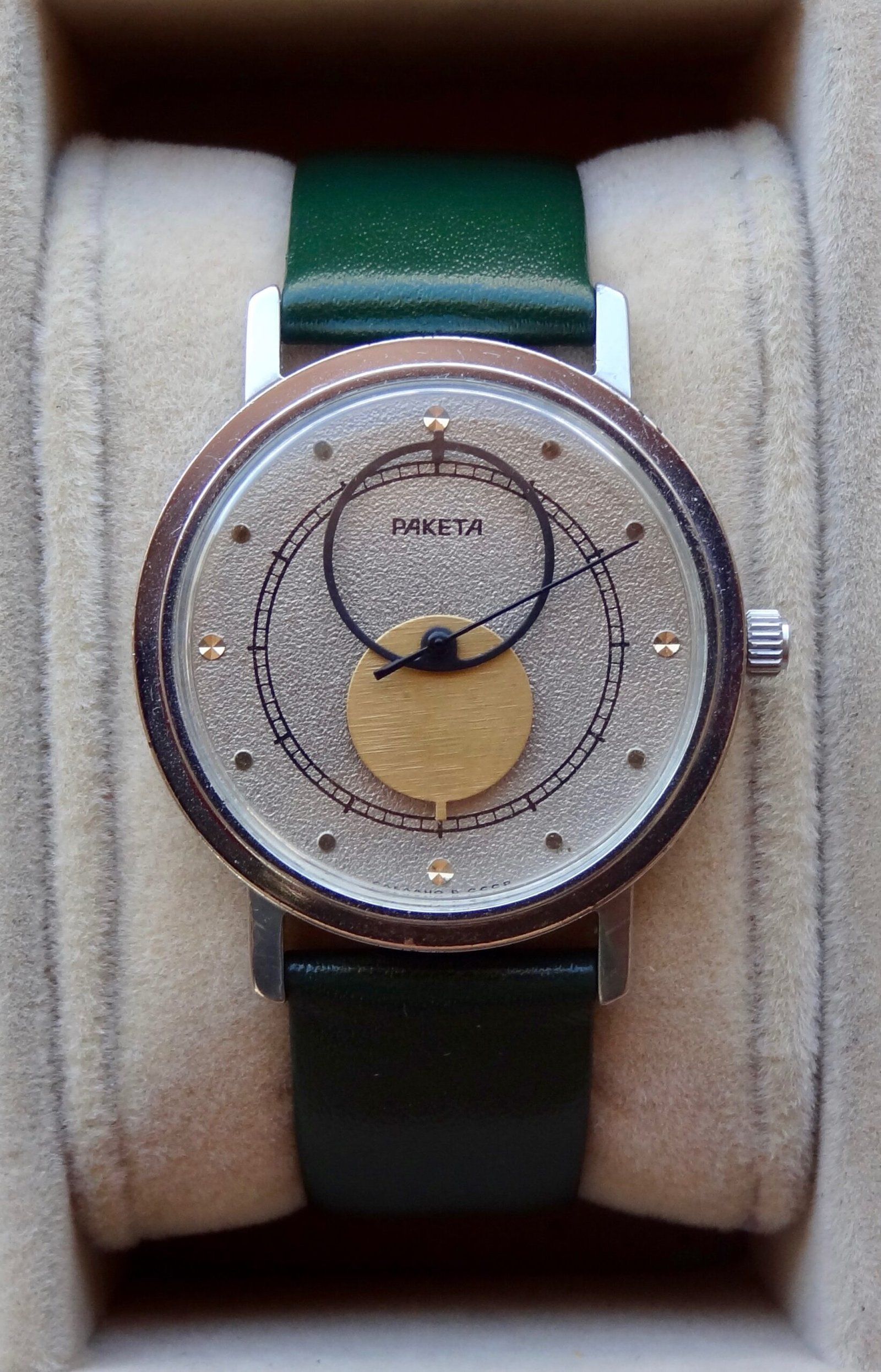

Current scenario of the Russian watch market is such that, although most of the watches are discontinued yet the ones that survived are now premier watchmakers in Russia. Vostok watch factory is still running through Chistopol, Russia and with modern machineries they are still manufacturing the Amphibians, Komandirskies and other special edition watches. Though they are using the old school reliable movements and those are very budget friendly watches. Raketa, Poljot and Sturmanskie are running with Swiss collaborations and making premium watches in their respective segments. Molnija is still running from Chelyabinsk factory and producing inhouse 3603 caliber movement watches. While other watch factories like Electronika, Luch etc. went to Belarus. Tutima and Hanhart went back to Germany. Lately many such brands have started custom group project approach and special edition reissues to relive the history. But best thing about these brands are that they still have their base models in their inventory produced as per exact technical specifications and design even after all these years and which is why the collectors should grab a piece of Russian watch history. For all the vintage lovers many of these vintages are still found among collectors and priced according to the rarity.
Regarding technicality of Soviet creation in watchmaking, the fundamentals of reverse engineering and simplifying complicated designs and features are best case studies one can find. Watch enthusiasts would love to learn more regarding a rich Soviet/Russian watch history once they start collecting and learning.
No articles found



